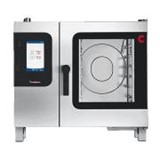While the current status of Australians' overall health and fitness may not be great, IBISWorld general manager (Australia) Karen Dobie flagged Australia's health, fitness and weight-loss industries as fighting fit. IBISWorld expects the average Australian to spend $114 over 2012-13 in a bid to combat growing waistlines.
"According to the Australian Bureau of Statistics, the number of overweight and obese Australians is sitting at over 60 per cent of the population and steadily increasing. More Aussies are thus seeking the assistance of professionals and products – forking out big dollars to get their health and weight under control," Dobie said.
"And with the continuing increased consumption of convenience foods and decreasing patterns of exercise, largely due to increased time pressures and stressful work schedules, IBISWorld expects the demand for health and weight-management services will continue to rise – to reach $3.0 billion by 2017-18", Dobie added.
Australian spending across health and weight-loss sectors
|
Expenditure categories |
2012-13 spending ($million) |
2017-18 spending ($million) |
Annualised growth (per cent) |
|
Gyms, fitness centres and personal trainers |
1715.9 |
2055.1 |
3.7 |
|
Weight-loss services (counselling services, books, etc.) |
379.6 |
447.0 |
3.3 |
|
Food, drinks and dietary supplements |
292.0 |
326.8 |
2.3 |
|
120.8 |
151.9 |
4.7 |
|
|
Pharmaceutical (medications, appetite suppression tablets, etc.) |
34.7 |
35.6 |
0.5 |
A fighting fit industry
"Many Aussies traded in the sweat towel for the TV over the past decade. According to the ABS, participation in vigorous exercise fell to just 15 per cent of the population in 2008.
However, increasing awareness of the dangers of being overweight, as well as the popularity of shows such as the Biggest Loser and Excess Baggage have driven a resurgence in demand for gyms, fitness centres and personal trainers, contributing to year-on-year growth for Australia's fitness industry," Dobie said.
In the coming year, IBISWorld expects Australians to spend over $1.7 billion on gym and fitness centre memberships and personal trainers – with personal trainers accounting for an ever-increasing share of the pie as Aussies opt for motivational, results-driven, intensive programs.
As for who is spending on fitness, Dobie said consumers aged 25 to 44 make up almost 60 per cent of the fitness industry's market.
"The transition into the mid-twenties tends to see disposable income increase, creating greater scope for spending on fitness compared with those in their early twenties and younger.
At the same time, the mid-twenties period tends to see a drop-off in organised sport participation, resulting in a shift towards gyms, fitness centres and personal trainers."
Supporting weight-loss services
"In order to achieve effective, successful and long-term weight loss, another area Australians are investing in is support services – including everything from dietary advice and counselling services, to self-help books," Dobie said.
In the coming year, IBISWorld anticipates Australians will spend close to $380 million on weight-loss support services – a figure forecast to increase to just under $450 million in the coming five years.
Weighing up weight-loss products
"Diet and nutrition are huge contributors to obesity rates. While takeaway and convenience foods are continuing to experience growth at one end of the scale, at the health-focussed end weight-loss foods, drinks and supplements are growing in popularity. These products include Weight Watchers' supermarket food products, Lite n' Easy and body-shaping protein powders," Dobie said.
But in comparison with Australia's love for fast food – an industry now worth $15.8 billion – Dobie said our want for weight-loss products falls far behind, with Aussies expected to fork out $292 million over the coming year on weight-loss foods, drinks and supplements.
"In a climate where consumers are cutting back on spending and trading down, factors like the perceived higher cost of weight-loss foods have been limiting growth. While the industry is still in its infancy, growing awareness, availability and ease of weight-loss foods is expected to contribute to growth over the coming years," Dobie said.
The heartbeat of health care
"While obesity poses a significant strain on Australia's public healthcare system – costing the economy an estimated $56 billion per year according to the Monash Obesity and Diabetes Institute – it is a slightly different story when it comes to private practice. Increased obesity levels are leading more Aussies to opt for elective surgical procedures such as lap band, liposuction and laser fat cavitation.
"These elective surgical procedures are forecast to cost $120 million in 2012-13," Dobie said.
"As surgical procedures for weight management become increasingly socially acceptable, more Aussies are opting for these procedures.
"IBISWorld forecasts spending on elective weight management surgery will increase by 4.7 per cent over the next five years to over $150 million."
In other areas of health care, pharmacies are also reaping rewards from our bid to get in shape, with IBISWorld forecasting Australians will spend over $34 million on appetite suppression tablets and medications in 2012-13.






